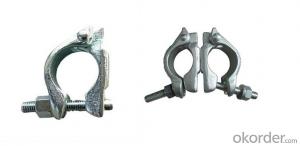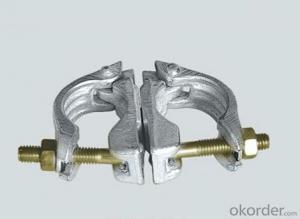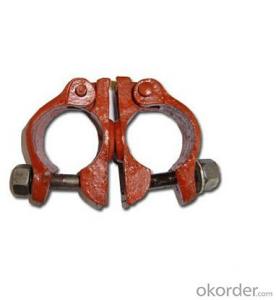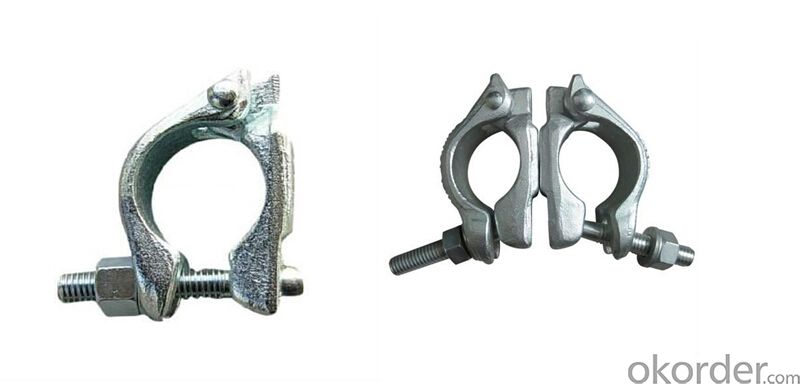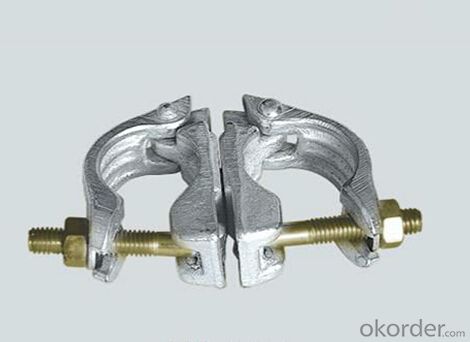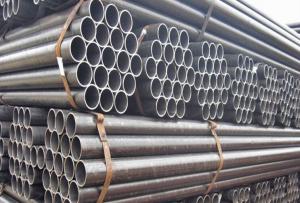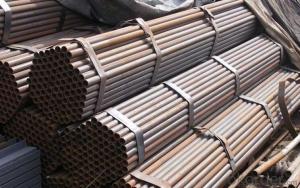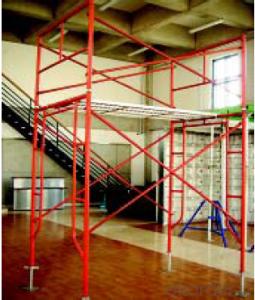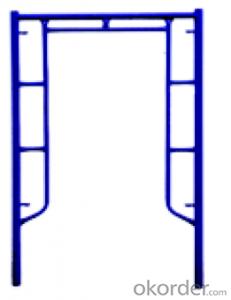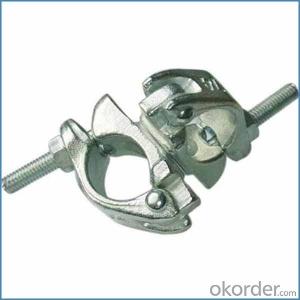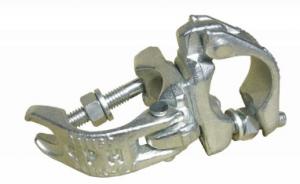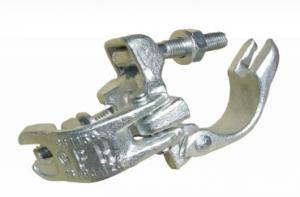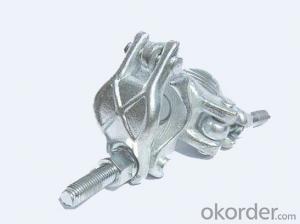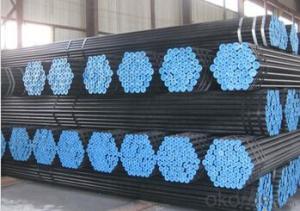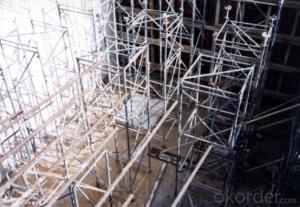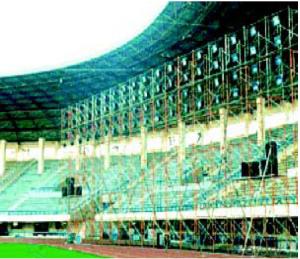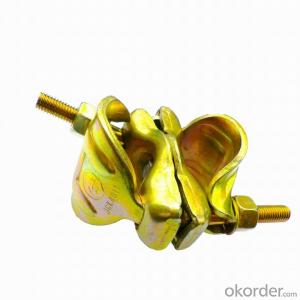Drop Forged Joint Pin Coupler with Stable and Durable
- Loading Port:
- Nanjing
- Payment Terms:
- TT or LC
- Min Order Qty:
- 1000 pc
- Supply Capability:
- 30000 pc/month
OKorder Service Pledge
OKorder Financial Service
You Might Also Like
1. Main Description about Drop Forged Joint Pin Coupler:
Size:48.3mm
Weight:1.15kg
Material: Q235/225/345
Surface :self-color,zinc plate,electro galvanized,HDG or painted
Standard: EN74 ,BS1139
Anti-rust ,skidproof ,high breaking strength
Durable finish, reliability, low maintenance, corrosion resistance, robust construction and high tensile strength
OEM serice is available
2. Specifications for Drop Forged Joint Pin Coupler:
Material: Q235
Swivel and Double Right Angle Coupler
Drop Forged and Pressed
BS1139 and EN74 Standard
Size:48.3*48.3MM
Pressed and Drop Forged Swivel and Fixed Coupler/Putlog Coupler/Sleeve Coupler/Inner Connector/Beam Coupler etc.
3. Pictures for Drop Forged Joint Pin Coupler:
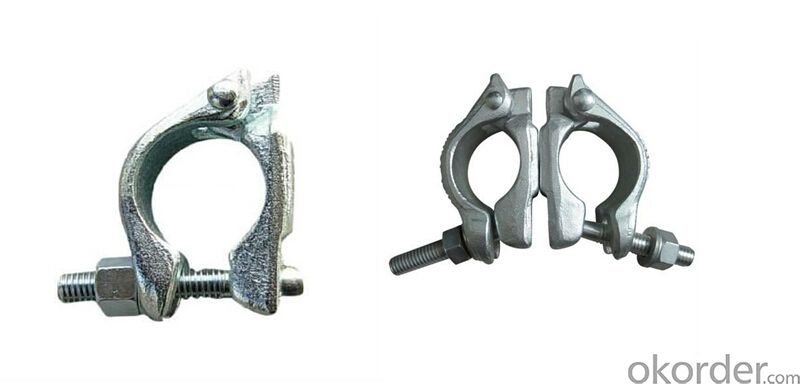
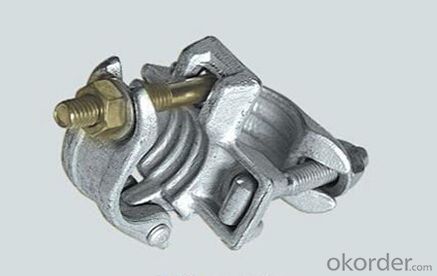
4. FAQ:
How about your company?
CNBM International Corporation, China National Building Materials (Group) Corporation, is one of the largest companies in China building material & equipment industry, Our formwork and scaffolding are largely used in both domestic and all over world;
How to Guarantee the Quality of the Products?
We have established the international advanced quality management system,every link from raw material to final
product we have strict quality test;We resolutely put an end to unqualified products flowing into the market. At the
same time, we will provide necessary follow-up service assurance.
- Q: Can steel tube couplers be used in scaffolding projects with limited maneuverability options?
- Yes, steel tube couplers can be used in scaffolding projects with limited maneuverability options. Steel tube couplers are versatile and can be easily adjusted and tightened in confined spaces. They provide a strong and secure connection between the tubes, allowing for stability and safety in scaffolding structures even in tight or restricted areas.
- Q: Can steel tube couplers be used for both indoor and outdoor scaffolding applications?
- Steel tube couplers are suitable for both indoor and outdoor scaffolding needs. They are specifically designed to securely connect scaffolding tubes, regardless of the environment in which they are used. The strength and durability of steel make it a fitting choice for various applications, including both indoor and outdoor settings. Steel tube couplers are also resistant to corrosion and can withstand extreme weather conditions, making them an excellent option for outdoor scaffolding. Furthermore, they are easy to install and provide a dependable and stable connection, ensuring the safety of workers and the stability of the scaffolding structure. Consequently, steel tube couplers offer versatility and can be utilized for both indoor and outdoor scaffolding applications.
- Q: Are there any specific guidelines for spacing and positioning steel tube couplers on scaffolding tubes?
- Yes, there are specific guidelines for spacing and positioning steel tube couplers on scaffolding tubes. These guidelines may vary depending on the specific regulations and standards of each country or region. However, in general, the spacing between couplers should not exceed a certain distance, typically around 1.5 meters (5 feet) apart horizontally and vertically. It is important to ensure that the couplers are properly aligned and tightened to ensure the stability and integrity of the scaffolding structure. Additionally, the positioning of couplers should be evenly distributed along the tubes to provide adequate support and load-bearing capacity. It is recommended to consult the relevant scaffolding regulations and standards to ensure compliance with the specific guidelines in your area.
- Q: Are there any specific guidelines for spacing steel tube couplers in scaffolding structures?
- Yes, there are specific guidelines for spacing steel tube couplers in scaffolding structures. The exact spacing will depend on factors such as the load capacity requirements, the type of scaffolding being used, and the specific regulations and standards of the country or region. Generally, couplers should be spaced at regular intervals along the steel tubes to ensure proper stability and structural integrity of the scaffolding system. It is important to consult relevant safety codes, manufacturer's instructions, and qualified professionals to determine the appropriate spacing for steel tube couplers in scaffolding structures.
- Q: Are steel tube couplers compatible with different types of scaffolding ladders or access systems?
- Yes, steel tube couplers are compatible with different types of scaffolding ladders or access systems. Steel tube couplers are widely used in scaffolding construction to connect and secure steel tubes together, forming the structural framework. These couplers are designed to be versatile and can be used with various types of scaffolding systems, including ladder-type scaffolding, mobile scaffolding, and modular scaffolding. The design of steel tube couplers allows for easy installation and connection of different components, ensuring a secure and stable scaffolding structure. They are specifically designed to withstand heavy loads and provide reliable support for workers accessing heights. Whether it is a straight ladder, double ladder, or folding ladder, steel tube couplers can be used to connect the ladder sections to the scaffolding system. Additionally, steel tube couplers can also be used with other access systems such as staircases, platforms, and walkways. These couplers enable the connection of steel tubes to create a sturdy and safe access system for workers to move between different levels of the scaffolding. Overall, steel tube couplers offer compatibility with various types of scaffolding ladders or access systems, making them an essential component in scaffolding construction.
- Q: What are the recommended torque specifications for tightening steel tube couplers?
- The recommended torque specifications for tightening steel tube couplers can vary depending on the specific type and size of the coupler being used. It is important to refer to the manufacturer's guidelines and specifications for the specific coupler being installed. Generally, torque specifications for steel tube couplers range from 15 to 30 foot-pounds (20 to 40 Newton-meters). It is important to use a torque wrench to ensure accurate and consistent torque application, as over-tightening can lead to damage or failure of the coupler, while under-tightening can result in leaks or insufficient joint strength. Always follow the manufacturer's recommendations and guidelines to ensure proper installation and performance of steel tube couplers.
- Q: How do steel tube couplers accommodate different angles or connections in scaffolding systems with irregular shapes?
- Steel tube couplers are designed to accommodate different angles or connections in scaffolding systems with irregular shapes by providing a versatile and flexible solution. These couplers are typically made of high-strength steel and feature a clamp-like design that allows for easy and secure attachment of tubes at various angles. One of the key features of steel tube couplers is their ability to rotate and adjust, allowing them to be used in scaffolding systems with irregular shapes. This flexibility enables scaffolding components to be connected at different angles, accommodating the unique requirements of the structure being erected. Additionally, steel tube couplers are available in various types to suit different connection needs. Some common types include swivel couplers, right-angle couplers, putlog couplers, and sleeve couplers. Each type has its specific design and functionality, enabling scaffolding tubes to be connected at different angles or configurations. In practice, when working with irregular shapes, scaffolders can use steel tube couplers to connect tubes at non-standard angles or positions. By loosening the coupler's bolts, the scaffolder can adjust the angle or position of the connected tubes to fit the irregular shape. Once the desired angle or position is achieved, the bolts are tightened, ensuring a secure and stable connection. Moreover, steel tube couplers are known for their high load-bearing capacity and durability. This makes them suitable for handling the weight and stresses imposed by irregular-shaped scaffolding structures. The robust construction of these couplers ensures that they can withstand the demands of various construction projects, providing safety and stability. Overall, steel tube couplers are essential components of scaffolding systems that allow for the accommodation of different angles or connections in structures with irregular shapes. Their flexible and adjustable design, coupled with their high load-bearing capacity, makes them an ideal choice for scaffolders working with irregular scaffolding configurations.
- Q: That's basically what it is right, 2 cartilage piercings? I understand that it's more painful than most piercings because the blood rushes to your ear after the first hole, but I got 4 cartilage piercings done in march and they didn't bring me to tears. I think at most I'd give it a 6/10 for pain.But from what I've read, most people give industrial/ scaffold piercings about a 7 or 8. Is it actually going to hurt more than my other cartilage piercings? Why? The placement?
- My industrial was my first cartilage piercing, and I'd give it a 3/10 or 4/10 during the process, but after, when it started throbbing, it was probably 7/10 or 8/10. But that's right, just two cartilage piercings. It's really no big deal at all! I was freaking out about it a whole lot, but it wasn't bad at all. After the first one, you know what's coming so it pinches just a little more, but nothing unbearable whatsoever. So, it's going to be about the same as your other two piercings. Good luck!
- Q: Are there any guidelines for the safe storage and transportation of steel tube couplers?
- Yes, there are guidelines for the safe storage and transportation of steel tube couplers. These guidelines aim to ensure the integrity and safety of the couplers during storage and transportation, minimizing the risk of damage or accidents. 1. Storage: Steel tube couplers should be stored in a dry, well-ventilated area to prevent exposure to moisture, which can cause corrosion. They should be kept away from direct sunlight and extreme temperatures. Couplers should be stored in an organized manner, with clear labeling to facilitate easy identification and access. 2. Handling: When handling steel tube couplers, care should be taken to avoid dropping or mishandling, as this can cause damage or deformities. Proper lifting equipment, such as cranes or forklifts, should be used to ensure safe and secure transportation. The use of appropriate personal protective equipment (PPE), such as gloves, helmets, and safety shoes, is also recommended. 3. Transportation: During transportation, steel tube couplers should be secured to prevent movement or shifting. They should be properly packaged and stacked to avoid any potential damage, such as scratches or dents. It is advisable to use suitable padding or cushioning material to provide additional protection. Couplers should be loaded and unloaded carefully, ensuring they are not subjected to excessive force or impact. 4. Inspection: Regular inspections should be conducted to check for any signs of damage, such as cracks, bends, or rust. Damaged couplers should be removed from service immediately and replaced with new ones to ensure safety. 5. Documentation: It is important to maintain proper documentation throughout the storage and transportation process. This includes keeping records of the couplers' origin, quantity, and condition. This documentation can be helpful in tracking and managing inventory, as well as for insurance purposes in case of any damage or loss. Following these guidelines will help ensure the safe storage and transportation of steel tube couplers, reducing the risk of accidents and maintaining the quality and integrity of the couplers.
- Q: What are the common maintenance procedures for steel tube couplers in scaffolding?
- To maintain steel tube couplers in scaffolding, it is necessary to regularly inspect them for damage or wear, clean them to eliminate dirt and debris, lubricate them for smooth operation, and replace any couplers that are worn or damaged. Inspecting the couplers on a regular basis is crucial for detecting cracks, bends, or any other indications of damage that could compromise the strength and stability of the scaffolding. This inspection should be performed before each use and periodically throughout the project to catch any problems early on. Cleaning the couplers is essential to remove any accumulated dirt, dust, or debris. This can be accomplished by using a brush or cloth, as well as water or a mild cleaning solution if needed. By keeping the couplers clean, corrosion can be prevented and their functionality can be maintained. Lubrication is another vital maintenance procedure for steel tube couplers. It involves applying a lubricant, such as grease or oil, to the moving parts of the couplers to prevent friction and ensure smooth operation. Regular lubrication is necessary to prevent wear and extend the lifespan of the couplers. Finally, if any couplers are found to be worn, damaged, or not functioning properly during inspection or use, they should be replaced without delay. Using faulty couplers can jeopardize the safety of both the scaffolding and the workers. It is important to have spare couplers readily available to replace any that are deemed unsafe or unusable. In conclusion, adhering to these common maintenance procedures can help keep scaffolding with steel tube couplers in excellent working condition, guaranteeing the safety and efficiency of construction projects.
Send your message to us
Drop Forged Joint Pin Coupler with Stable and Durable
- Loading Port:
- Nanjing
- Payment Terms:
- TT or LC
- Min Order Qty:
- 1000 pc
- Supply Capability:
- 30000 pc/month
OKorder Service Pledge
OKorder Financial Service
Similar products
Hot products
Hot Searches
Related keywords
